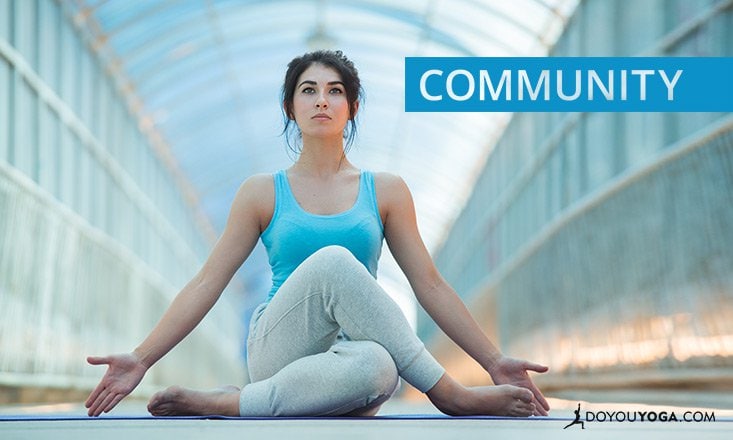
The Sage Patanjali defined the Eight Limbs of Yoga. Each of these can help you feel more spiritual and healthy. There are eight kinds of yoga: Yamas and Niyamas, Pranayamas, Dhyana, Samadhi, Pranayamas, Pranayamas, Dhyana, Samadhi, and Pranayamas. Asana refers to the physical postures. These exercises help to cleanse the body as well as the mind. Pranayama, or breathing to purify your chakras, is a practice.
Concentration and meditation are both forms of dhyana. While concentration and dhyana may seem similar, they are not the same. Meditation requires heightened awareness without focusing, while concentration requires focused attention. In order to successfully practice dhyana, one must develop stamina, strength, and patience. Dhyana will take the practitioner to a higher spiritual level once he or she has achieved this state.

Asana is the physical act of concentrating. The second branch, called dhyana (deep meditation) involves active concentration. Dhyana requires calm concentration, which can make it difficult for beginners. Samadhi, the last limb of yoga is described as the culmination or connection to a higher power.
You can improve your yoga practice by serving others in selfless service. It involves serving without expectation. This can be done to animals, people, and the entire world. This is a powerful way to transform one's life and achieve spiritual liberation. Selfless service is an essential part of yoga. If you're serious, you can achieve a deeper sense and peace through the practice.
The eighth branch is dhyana. Dhyana is the first branch. The second branch, samadhi or surrender, is the third. Pratyahara, the fifth branch, is also available. The eight branches and benefits of yoga are all interrelated. Anyone can practice the eight branches of yoga, regardless of their level of experience. One can devote their practice to it without the need for external tools.

You can combine the eight yoga branches or perform them separately. Some branches overlap while others are restricted to a specific body part. Many people practice more than one branch of yoga, as they can enjoy the benefits of each one. The eight different branches of yoga will help you find your way to Yoga. All of them have a common goal: enlightenment. You can achieve higher levels of awareness through various forms of yoga.
Ashtanga, a type of classical yoga that is based upon the classification of Patanjali, is a form called Ashtanga. There are eight types of yoga: Hatha (Karma), Raja, Raja and Kriya. Each branch of yoga is suited for a certain type of practitioner. Karma, for example, is focused on service while Bhakti, on love, devotion and union. Jnana, which is a branch Hatha, is focused on knowledge.
FAQ
What is the best exercise routine to build muscle?
You need to perform two types of exercises when building muscle mass. These are isolation exercises and compound moves. While isolating exercises target specific muscles, compound movements are designed to focus on multiple muscle groups at once.
You can improve your workouts by choosing exercises that challenge all major muscle groups. This ensures that you are always working hard during each session.
MyFitnessPal, an app that tracks your actions, can be used to help you keep track. It lets you log everything from calories burned and weight lifting. You can also create customized meal plans based upon your goals.
Is Cardio Better Than Strength Training?
Both are equally excellent. However, cardio is more effective if you're looking to bulk up faster.
Cardio burns more calories in a minute than strength training and more fat.
Strength training is a great way to build muscle mass. However, it takes more effort than cardio.
Eggs are good for us.
The egg has all the nutrients the body requires. It helps to maintain strong bones and healthy hearts and lungs and stabilize blood pressure.
Eggs are a good source of protein and vitamins A, B12, D, E K, calcium, phosphorus iron, zinc copper, magnesium selenium and even riboflavin.
The egg yolk is high in cholesterol. It does not contain any saturated fat. Eggs have less saturated fat than many other foods.
They are also low on calories and sodium. They are very versatile and can be cooked any way you'd like. You can fry, poach, scramble, boil, hard-boil, and bake them.
They are very healthy and simple to make.
Two whole eggs should be eaten each day. You can add eggs to your diet if you don't like eating eggs.
Essential nutrients are found in eggs. Add eggs to your diet today.
Can I consume alcohol while working out?
Yes. Alcohol has increased energy expenditure, speed up recovery time, and reduced soreness.
Additionally, alcohol can increase insulin sensitivity and make it easier to absorb glucose.
However, alcohol can cause dehydration, which can slow down your metabolism. Alcohol can also lower testosterone production, which could lead to a decrease in muscle-building potential.
For these reasons, women shouldn't drink alcoholic beverages before working out. Women who drink heavily should wait at LEAST 24 hours before they start working out.
Women who are nursing should avoid alcohol as much as possible.
Men should limit their intake to one drink per day.
Statistics
- The PRS enabled risk stratification for overall prostate cancer and lethal disease with a four-fold difference between men in the highest and lowest quartiles (HR, 4.32; 95% confidence interval [CI], 3.16-5.89). (pubmed.ncbi.nlm.nih.gov)
- 10 pounds in a month is likely during a lean bulking phase, especially for beginners. (muscleandstrength.com)
- By John Thompson Take a whopping 38% off a set of PowerBlock Pros. (menshealth.com)
- Are You One of the 20% of Guys (mh.co.za)
- Candidates and applicants must pass all four tests at 70% (minimum level) to graduate from Basic Deputy U.S. Marshal (BDUSM) Training. (usmarshals.gov)
External Links
How To
How can I exercise to burn fat?
Exercise helps you lose calories by increasing your metabolism and oxygen intake.
You'll lose weight safely if you exercise at moderate intensity.
These tips will help you burn fat and keep fit while exercising.
-
Cardio exercises like walking, running (or jogging), swimming, cycling, running, and/or elliptical training are all good options.
-
Three times per week, exercise for 30 minutes.
-
If you want to lose more weight, add strength training to your routine.
-
Avoid doing intense exercises. You can build muscle without breaking down muscle tissue.
-
Keep hydrated during exercise. Water helps to flush out toxins from the body and maintains proper hydration.
-
After exercising, you should drink low-fat protein drinks. Protein shakes repair muscles and increase energy.
-
Take smaller meals throughout each day to avoid feeling hungry.
-
Don't skip breakfast! Skipping breakfast can lead to fatigue and sluggishness.
-
Take care of yourself mentally. Stressful situations can slow down metabolism.
-
Keep a positive attitude. Studies have shown that people who are convinced they are overweight gain more weight than those who feel they look attractive.
-
Get enough sleep. A lack of sleep makes it difficult to lose fat.
-
Active living is key. Move around at least once an hour.
-
Maintain a healthy diet. A healthy diet will help you feel fuller for longer.
-
Relaxation is possible by finding ways to relax. Your body won't release stress hormones that cause muscle tissue destruction if you have a tense mind.
A balanced diet is one that includes all of the essential nutrients required for growth.
You should eat six small meals per day rather than three large ones. This gives your body the time it needs to process what you've eat.
To maintain strong bones, you need to consume 500 mg of calcium each day. Calcium is found in dairy products like yogurt, fortified milk beverages, orange juices, cereals and bread.
Calcium comes from leafy green vegetables, beans, tofu, nuts, seeds, and cheese.
Vitamin D is required for calcium absorption. Vitamin D can be found in egg yolk, fatty fish, and other fortified foods.
Vitamin E is essential for skin health. Vitamin E can also be found in vegetable oil, wheat germ oils, peanuts as well almonds, sunflower seeds and corn.
Your body needs zinc to maintain normal immune function and heal wounds. Zinc can be found as a mineral in oysters.
Zinc deficiency can cause fatigue and loss of appetite. It can also lead to depression and impaired immunity.
Too much sugar leads to insulin resistance. This results in higher blood glucose levels. Insulin resistance can lead to weight gain.
When there is a high level of free radicals, insulin resistance can develop. Free radicals can be molecules with unpaired electrons that cause damage to cell membranes.
Food additives, pesticides and herbicides, as well as preservatives, smoking and radiation are all sources of free radicals.
Free radical damage can lead to cancer, heart disease, diabetes, arthritis, asthma, and aging.
The best way to avoid free radicals is to eat a balanced diet high in antioxidants. Antioxidants protect against oxidative damage.
Vitamin C, beta carotene (found within citrus fruits, carrots, sweet potatoes and spinach), Vitamin E (found inside nuts, olive oils, avocados and eggs), and Vitamin C (found among mangoes.
Other antioxidant nutrients include selenium, copper, manganese, and zinc.
Selenium is known to protect cells from the oxidative damage that free radicals can cause. Selenium is also found in Brazil nuts.
Copper protects the eyes, brain, lungs, liver, and red blood cells. Copper is also found in poultry, meat, and organs.
Manganese, an essential component of bone strength, is crucial. Manganese may be found in brown rice or spinach, bananas and prunes as well raisins, oatmeal and lentils.
Zinc is essential for normal growth, reproduction, wound healing, and average growth. Zn can also be found in white fish, lean cuts of meat, poultry, and eggs.